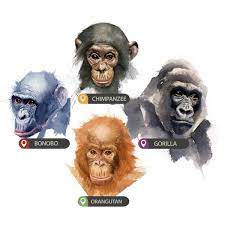By Prof. Levine & Dr. Salganik
Greetings,
This time we will open this conversation with an example of an imaginary character taken from literature and go back to its origins in the second half of the 18th century. The subject of the example is the imaginary character of Werther.
"The Sorrows of Young Werther" is a novel from letters written by Johann Wolfgang von Goethe and which was published in the second half of the 18th century [1774].
The book was published in the fall of 1774 at the Leipzig Book Fair and is one of the representative works of the German "Sturm und Drang" stream.

Johann Wolfgang von Goethe (1749 – 1832)
The book consists mainly of letters written by the hero Werther to his friend Wilhelm. At the ball, Werther meets Lotte, the daughter of a clerk who takes care of her eight siblings. Werther knows she is engaged, and yet falls desperately in love with her. and spends time with her often.
But when Albert, Lotte's fiancé, returned, Werther felt the hopelessness of his love for Lotte. Later Lotte marries Albert. And after a meeting in which the emotion overwhelms Lota, she kisses him with feelings of guilt and runs away. Werther sinks into despair, hopelessness and endless mental darkness. He writes a farewell letter and shoots himself to death.
With the publication of the book, according to one version, Werther's character became a role model for many young people who probably internalized his character and identified with it and perhaps for some of them he became the dominant character in the "board of internalized characters" that build their "social self". There was even a clothing fashion inspired by the character of yellow vest pants and a blue jacket and even other products mentioned in the book. Some talk about it as mass hysteria or the "Werther phenomenon". And there are reports that a wave of suicides or at least a number of suicides was observed following the book, a phenomenon called the "Werther effect".
Read more »
By Prof. Levine & Dr. Salganik
שלום רב
נפתח הפעם שיחה זו בדוגמא לדמות דמיונית הלקוחה מן הספרות ונרחיק למקורותיה במחצית השנייה של המאה ה18. נשוא הדוגמא הינו הדמות הדמיונית של ורתר.
"יסורי ורתר הצעיר" הינו רומן מכתבים שנכתב על ידי יוהאן וולפגנג פון גתה ואשר יצא לאויר העולם במחצית השניה של המאה ה18 [1774].
הספר פורסם בסתיו 1774ביריד הספרים של לייפציג והינו אחת היצירות הייצוגיות של זרם "הסער והפרץ" הגרמני .

יוהאן וולפגנג פון גתה (1749-1832]
הספר מורכב בעיקר ממכתבים שכותב הגיבור ורתר לחברו וילהלם. ורתר פוגש בנשף בלוטֶה, בתו של פקיד המטפלת בשמונת אחיה. ורתר יודע שהיא מאורסת, ולמרות זאת מתאהב בה במהירות נואשות. ומבלה עימה לעיתים קרובות.
אך כאשר שב אלברט, ארוסה של לוטה, חש ורתר את חוסר התקווה באהבתו ללוטה. בהמשך לוטה נישאת לאלברט. ולאחר פגישה בה הרגש גובר על לוטה היא מתנשקת עימו אחוזת רגשי אשמה ונמלטת. מבטיחה כי מעתה ועד עולם לא תפגש יותר עם ורתר ששוקע לייאוש חוסר תקוה וחשיכה נפשית אינסופית. הוא כותב מכתב פרידה ויורה בעצמו למוות.
עם פרסומו של הספר, לפי אחת הגרסאות הפכה דמותו של ורתר למודל חיקוי עבור צעירים רבים שכנראה הפנימו את דמותו והזדהו עימה ואפשר ואצל חלקם הפכה לדמות הדומיננטית ב"דירקטוריון הדמויות המופנמות" הבונות את ה"אני החברתי" שלהם. נוצרה אף אופנת לבוש בהשראת הדמות של מכנסיים ווסט צהובים ומעיל כחול ואף של מוצרים אחרים הנזכרים בספר. יש המדברים על כך כהיסטריה המונית או "תופעת ורתר". ויש דיווחים כי נצפה גל התאבדויות או לפחות מספר התאבדויות בעקבות הספר, תופעה שכונתה "אפקט ורתר".
Read more »
By Prof. Levine & Dr. Salganik
Greetings
Narcissistic personality disorder is characterized by a variety of fantasies and grandiose behaviors, a great need for admiration and a lack of empathic ability [the ability to step into the other's shoes]. Figures in history who are mentioned in this context are Alexander the Great, Napoleon Bonaparte and Henry VIII alongside many others.
For example, many historians and biographers claim that Napoleon Bonaparte: the French military and political leader who rose to prominence during the French Revolution and related wars exhibited characteristics consistent with narcissistic disorder: he had a grand and grandiose vision for himself, he was preoccupied with fantasies of unlimited success, and he believed that he was special and unique.

Napoleon Bonaparte (1769 – 1821)
According to the American DSM-5 classification approach, the disorder is diagnosed in early adulthood after adolescence and manifests itself in five or more of the following characteristics:
1. A sense of grandiose self-importance: such as a tendency to overestimate skills and achievements, expecting those around to recognize one's superiority even though he has no corresponding achievements and skills.
2. Preoccupation with fantasies about success, beauty, extraordinary abilities, or ideal love.
3. The person believes that he is special or unique, and feels that only special and unusual people like him will be able to understand him.
4. Man needs a lot of admiration for the environment.
5. The person has a feeling that he is entitled to special privileges (the person has an unrealistic expectation of preferential treatment and that others must pay attention and immediately fulfill his expectations).
6. Man uses others to achieve personal goals within his interpersonal relationships.
7. Lacks empathy (a person lacks or is unable or unwilling to recognize the feelings of others).
8. Often a person is jealous of others or he believes that he is the object of others' jealousy.
9. The person often tends to demonstrate an arrogant attitude or behavior.
It seems that many of those with narcissistic personality disorder are characterized by unstable, incomplete and insecure attachment characteristics due to their experience with significant relationships in their early past that were unstable or ambivalent and did not provide sufficient security and left the person hurt without the ability to develop defenses [defense mechanisms].
The cognitive behavioral therapy [CBT] understanding of the disorder speaks of a thought and emotional system characterized by systems of perception of excessive and "inflated" self-importance, great difficulty in identifying with and developing empathy for others, and a great emphasis on one's position and status.
Interestingly, for narcissistic personality disorder, CBT can be helpful in preventing and mitigating behaviors that cause stress in their relationships. CBT can also help narcissists challenge distorted, internalized beliefs about themselves that can trigger emotional outbursts and narcissistic rage. In addition to subculture characteristics, research suggests that childhood experiences can play an important role in causing this personality disorder. Negative childhood experiences, such as rejection or criticism by parents, may contribute to the disorder in adulthood. At the same time, on the other hand, too much unrealistic praise and admiration from parents and the environment can lead to this.
Read more »
By Prof. Levine & Dr. Salganik
שלום רב
הפרעת אישיות נרקיסיסטית מאופיינת במגוון פנטזיות והתנהגויות גרנדיוזיות, צורך רב בהערצה וחסרים ביכולת אמפטית [היכולת להיכנס לנעליו של האחר] .דמויות בהיסטוריה אשר מוזכרות בהקשר זה הינן אלכסנדר הגדול, נפוליאון בונפרטה והנרי השמיני לצד רבים אחרים.
כך למשל, היסטוריונים וביוגרפים רבים טוענים כי נפוליאון בונפרטה: המנהיג הצבאי והפוליטי הצרפתי שעלה לגדולה במהלך המהפכה הצרפתית והמלחמות הקשורות אליה הפגין מאפיינים התואמים את ההפרעה הנרקיסיסטית: היה לו חזון גדול וגרנדיוזי לעצמו, הוא היה עסוק בפנטזיות של הצלחה בלתי מוגבלת, והאמין שהוא מיוחד וייחודי.

נפוליאון בונפרטה (1769-1821)
על פי גישת הקלסיפיקציה האמריקאית DSM-5 ההפרעה מאובחנת בבגרות המוקדמת לאחר גיל הנעורים
ומתבטאת בחמש או יותר מהאפיינים הבאים:
1. תחושת חשיבות עצמית גרנדיוזית: כמו נטייה להערכה מופרזת של כישורים והישגים, ציפייה מהסובבים להכיר בעליונותו של האדם בעוד שאין לו הישגים וכישורים מתאימים לכך.
2. עיסוק רב בפנטזיות אודות הצלחה, יופי, יכולות יוצאות דופן, או אהבה אידיאלית.
3. האדם מאמין כי הוא מיוחד או ייחודי, וחש כי רק אנשים מיוחדים ויוצאי דופן כמותו יוכלו להבין אותו.
4. האדם זקוק להתפעלות רבה מהסביבה.
5. לאדם תחושה שהוא זכאי לזכויות יתר מיוחדות (לאדם ציפייה לא ריאלית ליחס מועדף וכי על אחרים לתת תשומת לב ולמלא מיידית את ציפיותיו).
6. האדם משתמש באחרים להשיג מטרות אישיות במסגרת יחסיו הבין-אישיים.
7. חסר באמפתיה (לאדם חסר או חוסר יכולת או אי רצון להכיר ברגשותיהם של האחרים).
8. לעיתים קרובות לאדם קנאה באחרים או הוא מאמין כי הינו מושא קנאתם של אחרים.
9. האדם נוטה לא פעם להפגין עמדה או התנהגות יהירה.
נראה כי רבים מאלו עם הפרעת אישיות נרקיסיסטית מאופיינים במאפייני התקשרות [ATTACHMENT] לא יציבים, לא שלמים ולא בטוחים על רקע ניסיונם עם מערכות יחסים משמעותיות בעברן המוקדם אשר לא היו יציבות או היו אמביוולנטיות ולא הקנו ביטחון מספק והותירו את האדם פגוע בלא יכולת לפתח הגנות [מנגנוני הגנה] טובות דיין.
ההבנה של הטיפול הקוגניטיבי התנהגותי [CBT] לגבי ההפרעה מדברת אודות מערך חשיבתי ורגשי המאופיין במערכי תפיסה של חשיבות עצמית יתרה ו"מנופחת", קושי רב להזדהות ולפתח אמפטיה לאחרים, ודגש רב על העמדה והסטטוס של האדם.
מעניין כי עבור הפרעת אישיות נרקיסיסטית, CBT יכול להיות מועיל בכדי למנוע ולמתן התנהגויות הגורמות למתח במערכות היחסים שלהם. CBT יכול גם לעזור לנרקיסיסטים לאתגר אמונות מעוותות ופנימיות לגבי עצמם שיכולות לעורר התפרצויות רגשיות וזעם נרקיסיסטי. בנוסף למאפייני תת-התרבות, מחקרים מצביעים על כך שחוויות ילדות יכולות לשחק תפקיד חשוב בגרימת הפרעת אישיות זו. חוויות ילדות שליליות, כמו דחייה או ביקורת על ידי הורים, עשויות לתרום להפרעה בבגרות. יחד עם זאת, מצד שני גם יותר מדי שבחים והערצה לא ריאליים מההורים והסביבה יכולים להוביל לכך.
Read more »
By Prof. Levine & Dr. Salganik
Greetings
Below is our article about socialization among non-human primates. For this purpose, we critically used GPT 4 and reviewed literature in PUBMED, and from that we focused on one article that we considered important. In light of the abundance of observations and research, we did not include in the review reports by well-known researchers about their lives with the great apes or studies that reported excellent immediate working memory in chimpanzees or interesting works that reveal a variety of human stigmas about the characteristics of alpha males and more.
1. Group life: Most primates live in social groups whose size can range from a few individuals to dozens and even hundreds. These groups offer protection from predators, help find food, and provide opportunities for learning and social interaction.
2. Hierarchies: Many primate groups operate under a social hierarchy, often dictated by factors such as age, sex, and physical strength. Dominant individuals usually have access to the best resources and the best mating opportunities.
3. Communication: Primates communicate using a wide variety of methods, including vocalizations, facial expressions, body postures, and physical contact. Some species also use albeit simple tools and display other forms of complex behavior.
4. Grooming: This is a common behavior among primates and serves not only a hygienic purpose but also a social purpose. Grooming can help strengthen social ties and maintain group harmony.
5. Mating and Parenting: Primates' mating systems are diverse and include monogamy, polygyny (one male, multiple females) and polyandry (one female, multiple males). In many primate species, parenting is largely the role of the mother, but in some, such as marmosets, males play a significant role, and in others, such as siamangs and gibbons, parental care is shared equally.
6. Cooperation and altruism: Primates often cooperate in tasks such as hunting or caring for young. Some primates have even been observed to exhibit altruistic behavior, such as distributing food or helping other group members in need.
7. Learning and Culture: Primates are able to learn by observing others, allowing behaviors to be passed down from generation to generation. This transfer of knowledge and behaviors can be considered a form of culture.
Each primate species has its own unique behaviors and social structures. For example, baboons live in large groups with complex hierarchies, while orangutans are mostly solitary. Chimpanzees and bonobos are known for their sophisticated social structures and behaviors, including their use of tools and displays of empathy. Gorillas live in groups led by a dominant silverback male. Lesser known species, such as lemurs and tarsiers, also have interesting social lives, but are less studied than their larger relatives.

Read more »
By Prof. Levine & Dr. Salganik
שלום רב
להלן כתבתנו אודות חיברות בקרב פרימטים שאינם בני אנוש. לצורך זה נעזרנו תוך ביקורתיות ב -GPT 4 וסקרנו ספרות ב PUBMED ועוד מתוכה התמקדנו במאמר אחד שנראה לנו חשוב. לאור שפע התצפיות והמחקר לא כללנו בסקירה דיווחים של חוקרות ידועות על חייהן עם הקופים הגדולים או מחקרים שדיווחו על זכרון עבודה מיידי מעולה אצל שימפנזים או עבודות מעניינות החושפות מגוון סטיגמות אנושיות על מאפייניהם של זכרי אלפא ועוד.
פרימטים [לא כולל בני אדם] ידועים בחיי החברה המורכבים שלהם. עם זאת למרות שהמבנים החברתיים וההתנהגויות משתנים באופן משמעותי בין מיני פרימטים שונים, נמנה כאן כמה מאפיינים נפוצים :
- חיים קבוצתיים: רוב הפרימטים חיים בקבוצות חברתיות שגודלן יכול לנוע בין פרטים בודדים ועד לעשרות ואפילו למאות. קבוצות אלה מציעות הגנה מפני טורפים, מסייעות במציאת מזון ומספקות הזדמנויות ללמידה ולאינטראקציה חברתית.
- היררכיות: קבוצות פרימטים רבות פועלות תחת היררכיה חברתית, המוכתבת לעתים קרובות על ידי גורמים כמו גיל, מין וכוח פיזי. לפרטים דומיננטיים יש בדרך כלל גישה למשאבים הטובים ביותר ולהזדמנויות ההזדווגות הטובות.
- תקשורת: פרימטים מתקשרים במגוון רחב של שיטות, כולל קולות, הבעות פנים, תנוחות גוף ומגע פיזי. מינים מסוימים משתמשים גם בכלים אמנם שפשוטים ומציגים צורות אחרות של התנהגות מורכבת.
- טיפוח: זוהי התנהגות נפוצה בקרב פרימטים ומשרתת לא רק מטרה היגיינית אלא גם מטרה חברתית. טיפוח יכול לעזור לחזק קשרים חברתיים ולשמור על הרמוניה קבוצתית.
- הזדווגות והורות: מערכות ההזדווגות של פרימטים מגוונות וכוללות מונוגמיה, פוליגניה (זכר אחד, נקבות מרובות) ופוליאנדריה (נקבה אחת, זכרים מרובים). במינים רבים של פרימטים, ההורות היא במידה רבה תפקידה של האם, אך בחלקם, כמו המרמוסטים, הזכרים ממלאים תפקיד משמעותי, ובאחרים, כמו הסיאמאנגים והגיבונים, הטיפול ההורי מתחלק באופן שווה.
- שיתוף פעולה ואלטרואיזם: פרימטים משתפים פעולה לעתים קרובות במשימות כמו ציד או טיפול בצעירים. חלק מהפרימטים אף נצפו מפגינים התנהגות אלטרואיסטית, כמו חלוקת מזון או עזרה לחברי קבוצה אחרים במצוקה.
- למידה ותרבות: פרימטים מסוגלים ללמוד על ידי התבוננות באחרים, מה שמאפשר להתנהגויות לעבור מדור לדור. העברה זו של ידע והתנהגויות יכולה להחשב כצורה של תרבות.
לכל מין של פרימטים יש התנהגויות ומבנים חברתיים ייחודיים משלו. לדוגמה, בבונים חיים בקבוצות גדולות עם היררכיות מורכבות, בעוד אורנגאוטנים הם בעיקר בודדים. שימפנזים ובונובו ידועים במבנים ובהתנהגויות החברתיות המתוחכמים שלהם, כולל השימוש שלהם בכלים וגילויי אמפתיה. גורילות חיות בקבוצות המובלות על ידי זכר כסוף גב דומיננטי. למינים פחות מוכרים, כמו למורים וטרסיירים, יש גם חיי חברה מעניינים, אך הם נחקרים פחות מקרוביהם הגדולים יותר.

Read more »

 Prof. Joseph Levine, M.D. is an emeritus associate professor in the Division of Psychiatry, Faculty of Health Sciences, Ben Gurion University in Israel. Prof. Levine is a certified psychiatrist with clinical experience in controlled trials of adult psychiatric disorders and in psychotherapy. He was awarded a NRSAD independent investigator grant for the study of Creatine Monohydrate in psychiatric disorders -- mainly Schizophrenia. He resides and treats patients in Tel Aviv and all of central Israel.
Prof. Joseph Levine, M.D. is an emeritus associate professor in the Division of Psychiatry, Faculty of Health Sciences, Ben Gurion University in Israel. Prof. Levine is a certified psychiatrist with clinical experience in controlled trials of adult psychiatric disorders and in psychotherapy. He was awarded a NRSAD independent investigator grant for the study of Creatine Monohydrate in psychiatric disorders -- mainly Schizophrenia. He resides and treats patients in Tel Aviv and all of central Israel.




